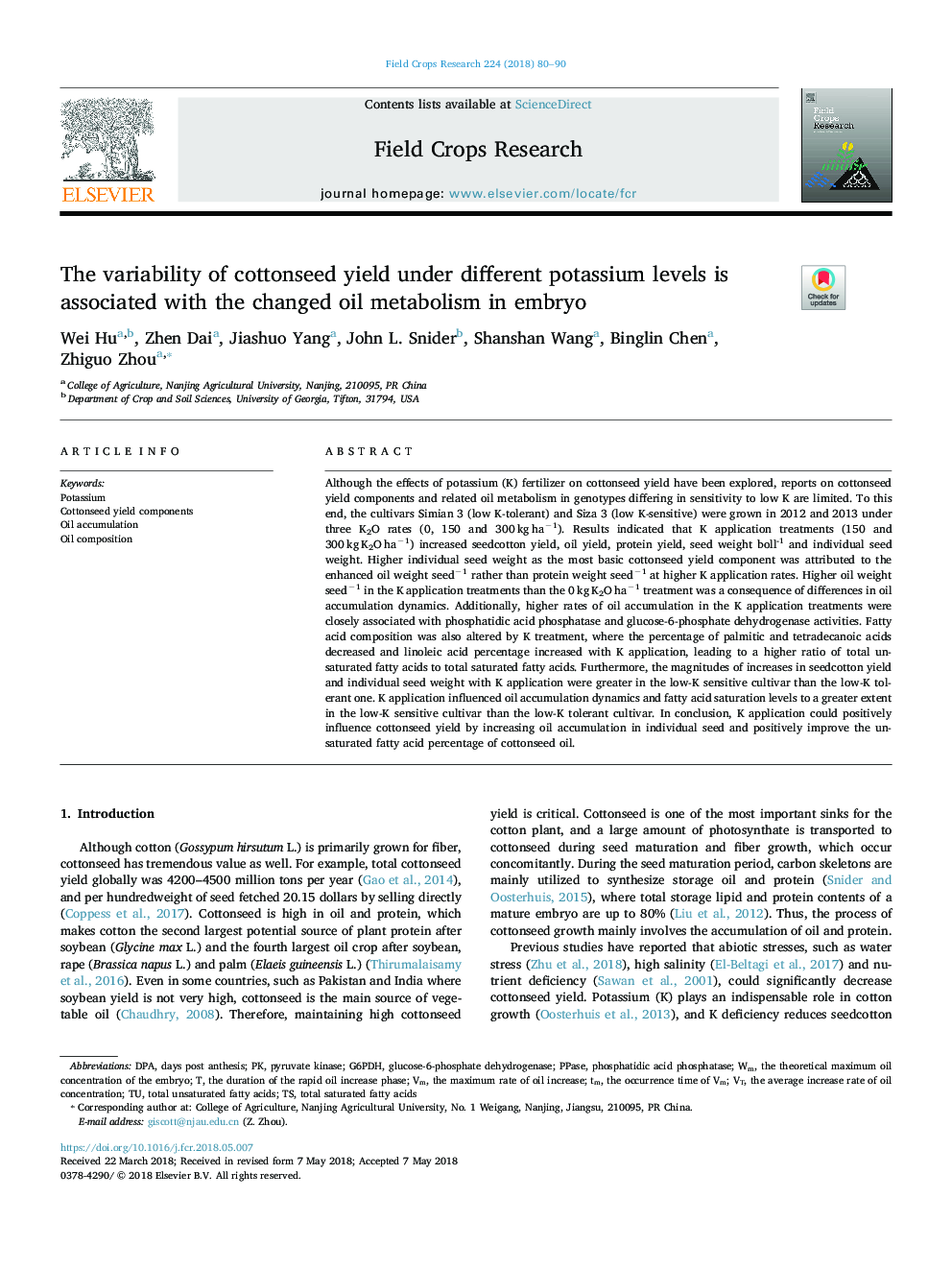| Article ID | Journal | Published Year | Pages | File Type |
|---|---|---|---|---|
| 8879119 | Field Crops Research | 2018 | 11 Pages |
Abstract
Although the effects of potassium (K) fertilizer on cottonseed yield have been explored, reports on cottonseed yield components and related oil metabolism in genotypes differing in sensitivity to low K are limited. To this end, the cultivars Simian 3 (low K-tolerant) and Siza 3 (low K-sensitive) were grown in 2012 and 2013 under three K2O rates (0, 150 and 300â¯kgâ¯haâ1). Results indicated that K application treatments (150 and 300â¯kgâ¯K2Oâ¯haâ1) increased seedcotton yield, oil yield, protein yield, seed weight bollâ1 and individual seed weight. Higher individual seed weight as the most basic cottonseed yield component was attributed to the enhanced oil weight seedâ1 rather than protein weight seedâ1 at higher K application rates. Higher oil weight seedâ1 in the K application treatments than the 0â¯kgâ¯K2Oâ¯haâ1 treatment was a consequence of differences in oil accumulation dynamics. Additionally, higher rates of oil accumulation in the K application treatments were closely associated with phosphatidic acid phosphatase and glucose-6-phosphate dehydrogenase activities. Fatty acid composition was also altered by K treatment, where the percentage of palmitic and tetradecanoic acids decreased and linoleic acid percentage increased with K application, leading to a higher ratio of total unsaturated fatty acids to total saturated fatty acids. Furthermore, the magnitudes of increases in seedcotton yield and individual seed weight with K application were greater in the low-K sensitive cultivar than the low-K tolerant one. K application influenced oil accumulation dynamics and fatty acid saturation levels to a greater extent in the low-K sensitive cultivar than the low-K tolerant cultivar. In conclusion, K application could positively influence cottonseed yield by increasing oil accumulation in individual seed and positively improve the unsaturated fatty acid percentage of cottonseed oil.
Keywords
Related Topics
Life Sciences
Agricultural and Biological Sciences
Agronomy and Crop Science
Authors
Wei Hu, Zhen Dai, Jiashuo Yang, John L. Snider, Shanshan Wang, Binglin Chen, Zhiguo Zhou,
